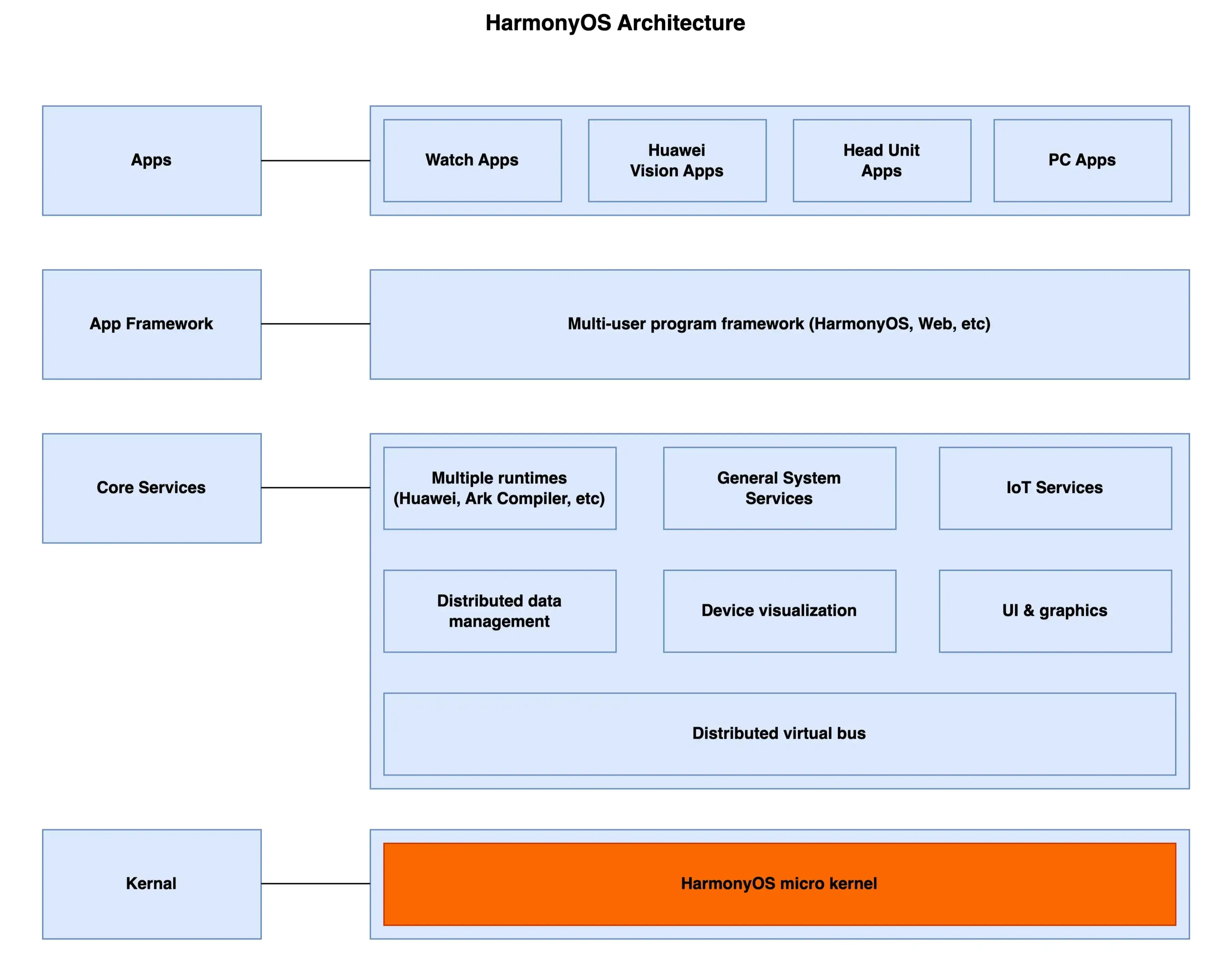We know the Huawei sanctions story, so let's skip that part. Those sanctions pushed Huawei to create HarmonyOS, a closed-source Android fork designed to keep things running. Did it work? Maybe, maybe not—it depends on who you ask.
I've seen this shift firsthand. Back when Huawei was moving away from Android (via AOSP & Google Mobile Services), it seemed more like a survival tactic. As a developer, managing two app variants was tedious enough for me to eventually step away from the ecosystem entirely.
Fast-forward to present, HarmonyOS NEXT is playing a completely different game. It's ditched Android entirely, so no libraries, no APK support, no reliance on AOSP. Huawei has reportedly tweaked from the ground up i.e. from the Kernel itself, adopting a micro-kernel structure, making it a fully independent and closed-source OS. It supports only native applications built specifically for the Harmony ecosystem. These now use .app and .hap extensions.
Here's a look at the architecture of HarmonyOS:

What's different about HarmonyOS NEXT?
Independence: Unlike its predecessor, HarmonyOS NEXT doesn't rely on Android at all.
Native Apps Only:
APKs are out. Huawei is doubling down on native Harmony apps.New Dev. Arch.: Developers now use
ArkTS(a mix of JavaScript and extended TypeScript aka.eTS) for building apps.Exploring Further
I'm particularly intrigued by
ArkTS, theArkCompiler& Huawei's new:Cangjielanguage. Who knows, a deep dive might lead to a blog post soon!Security: The micro-kernel architecture enhances system security by isolating core processes and minimizing attack surfaces. Also, there is no root access like Android.
Unified Device Ecosystem: Seamless integration across Huawei devices i.e. phones, tablets, wearables, and IoT devices—through its "Super Device" feature.
Reduced Resource Overhead: The lightweight micro-kernel design ensures better performance and lower resource consumption, making it ideal for both high-end and low-end devices.
While these upgrades sound cool, there's one massive challenge: The App Ecosystem. As of October 2024, HarmonyOS NEXT has over 15,000 native applications. Compare that to Google Play's millions, and it's clear Huawei has a long road ahead. Convincing developers to adopt another platform won't be easy—it’ll require significant incentives.

